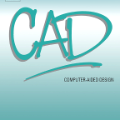
Coronary angiography is the "gold standard" for diagnosing coronary artery disease (CAD). At present, the methods for detecting and evaluating coronary artery stenosis cannot satisfy the clinical needs, e.g., there is no prior study of detecting stenoses in prespecified vessel segments, which is necessary in clinical practice. Two vascular stenosis detection methods are proposed to assist the diagnosis. The first one is an automatic method, which can automatically extract the entire coronary artery tree and mark all the possible stenoses. The second one is an interactive method. With this method, the user can choose any vessel segment to do further analysis of its stenoses. Experiments show that the proposed methods are robust for angiograms with various vessel structures. The precision, sensitivity, and $F_1$ score of the automatic stenosis detection method are 0.821, 0.757, and 0.788, respectively. Further investigation proves that the interactive method can provide a more precise outcome of stenosis detection, and our quantitative analysis is closer to reality. The proposed automatic method and interactive method are effective and can complement each other in clinical practice. The first method can be used for preliminary screening, and the second method can be used for further quantitative analysis. We believe the proposed solution is more suitable for the clinical diagnosis of CAD.
翻译:冠状动脉疾病诊断的“黄金标准”是冠状动脉疾病诊断的“黄金标准 ” ( CAD ) 。 目前,检测和评估冠状动脉加速症的方法无法满足临床需要,例如,事先没有研究在事先指定的容器区块中检测鼻涕,这是临床实践所必须的。建议了两种血管加速症检测方法来帮助诊断。第一个是自动方法,可以自动提取整个冠状动脉树并标记所有可能的腹膜。第二个是互动方法。用这种方法,用户可以选择任何船只区段对其鼻腔进行进一步分析。实验表明,在各种容器结构中,拟议方法对血管动脉瘤是健全的。自动加速症检测方法的精确度、灵敏度和1美元分数分别为0.821、0.757和0.788。进一步调查证明,互动方法可以提供更精确的心胸膜检查结果,而我们进行定量分析的第一次方法更接近现实。拟议的自动方法和交互式临床诊断方法都是用于进一步诊断的。我们采用的两种方法,在初步和定量分析中采用的方法是比较有效的。我们使用的。 采用的方法是比较有效的和交互方法。我们使用的,用来进行诊断的方法是比较有效的。


